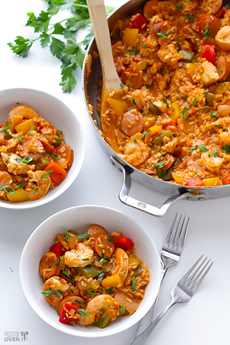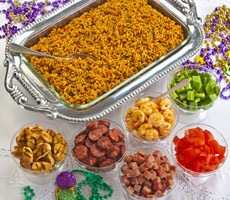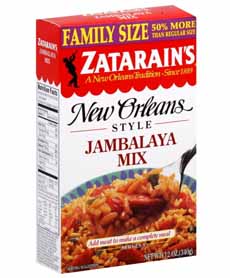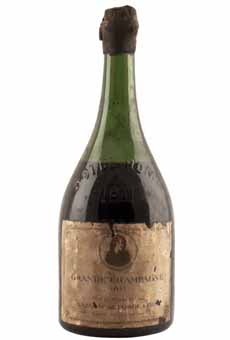DIY Jambalaya Party Bar With Recipes For Mardi Gras
|
For Mardi Gras—February 28—try a new take on food bars (a.k.a. buffets): DIY Jambalaya.
Jambalaya is a delicious, spicy, main course consisting of rice and practically everything else in the refrigerator! It’s a great way to use favorite meats and veggies (shrimp, peas, carrots, bell peppers). You can start from scratch; for a family night, using leftovers is more than acceptable. Jambalaya is also an economical and easy way to feed a large group—Super Bowl Sunday, Oscar parties, even outdoor fêtes. But, as a creation of New Orleans, we like it best for Mardi gras. The recipes for Jambalaya and the Sazerac Cocktail are below. Here are more Mardi Gras recipes—a whole celebration’s worth! Jambalaya originated in Louisiana. Creole jambalaya, called red jambalaya by the Cajuns to differentiate it from their take—sprang from the French Quarter of New Orleans, the sector originally inhabited by Europeans. Jambalaya was an adaptation of paella by the Spaniards, most of whom could not afford saffron (an essential paella ingredient) due to high import costs. Tomatoes were substituted to color and flavor the dish. French Creoles introduced jambalaya to the Cajuns of southern Louisiana, who rarely used tomatoes (it’s swamp country). Instead, they browned the meat for color and smoky flavor and referred to their recipe as brown jambalaya. The word “jambalaya” is a combination of the Spanish jamón or the French jambon, meaning ham, and another word; however, what word that is can be controversial. Since jambalaya could be made economically in big black cast iron pots for crowds*, it became popular for large events, including church suppers, weddings and political rallies. The recipe evolved to seafood-only versions, meat-only versions, and vegetarian/vegan recipes. One of the benefits of a jambalaya bar is that each person can customize the dish as he/she wishes. The easiest way to make the rice is to use Zatarain’s Jambalaya Mix. Alternatively, use plain white rice with cajun seasoning from McCormick, or other brands. Thanks to Olivia Manning and Zatarain’s for the suggestion! This recipe makes five dinner-size portions. Multiply it for a larger crowd. Don’t worry about leftovers: leftover Jambalaya is delicious (even cold!). Ingredients For 5 Servings Cooked Proteins (Total 1.5 Cups) 1. MIX the water and rice mix in a large saucepan until well blended. Bring to a boil. Reduce the heat to low; cover and simmer for 25 minutes or until most of the water is absorbed and the rice is tender 2. REMOVE from the heat and let stand for 5 minutes. Fluff with a fork before serving and place on a platter or individual serving plates. Bring to the table with the add-ins. |
|
|
|
________________ *One of the charms of paella is the crispy rice crust that develops at the bottom of the pan, called soccarrat. You can’t get socarrat from cooking in a large kettle. Paella is cooked in a wide, shallow pan with a layer of rice on the bottom. At the end of cooking, the heat is turned up to create the crust. Socorrat derives from the Spanish verb socarrar, to singe. |
||
|
|
WHAT TO DRINK? A SAZERAC! Beer and Jambalaya are natural companions, but you might like to start the event with a round of one of New Orlean’s signature cocktails, the Sazerac. Developed in the 1830s, the Sazerac is a New Orleans variation of a cognac or whiskey cocktail, named for the Sazerac de Forge et Fils house of cognac with which it was originally made, plus rye. As the story goes, the cocktail was first mixed at Antoine Amédée Peychaud’s apothecary on Royal Street. With his own bitters—still called for in the recipe— Peychaud’s bitters, served friends a Cognac cocktail made with his own bitters (you can make your own too—here’s more about bitters). It was then popularized at Sazerac Coffee House, a saloon on Exchange Place in the French Quarter. The primary ingredient in the cocktail was switched from cognac to rye in 1870 and an absinthe rinse added, due to changing tastes; the recipe remains so today, but you can go back to the original—or make both recipes to see which you prefer. It is one of many descendants of the Old Fashioned. The absinthe and Peychaud’s bitters make it unique to New Orleans. Bartenders of today use rich simple syrup (2:1 sugar:water ratio instead of 1:1) instead of the sugar cube. Ingredients Per Drink 1. RINSE a chilled old-fashioned (rocks) glass with the absinthe, add crushed ice and set it aside. 2. STIR the remaining ingredients in a shaker over ice and set it aside. 3. DISCARD the ice and any excess absinthe from the prepared glass, and strain the drink into the glass. Garnish and serve. Optionally, you can serve the drink straight up. |
|
|
|
||






